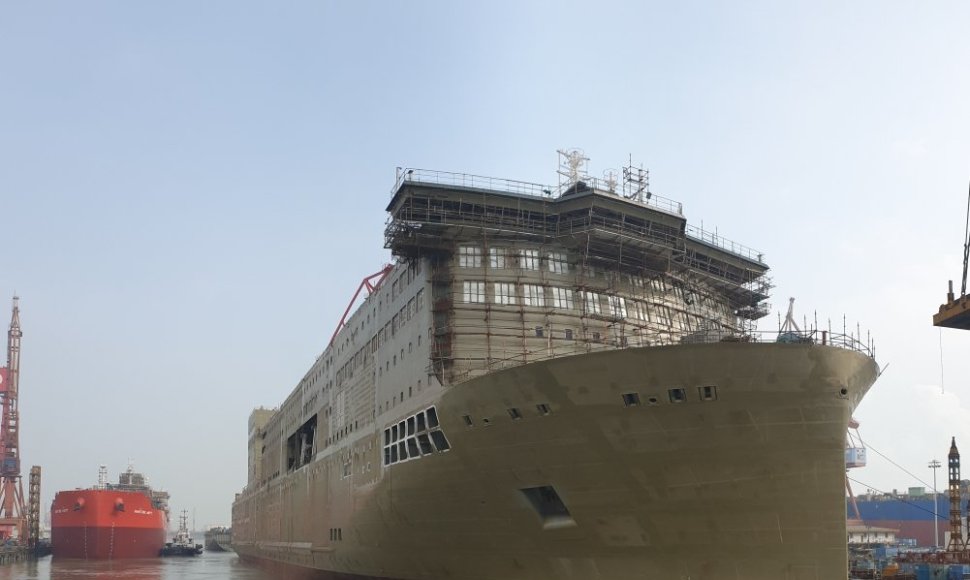Ro-pax type ferries allow the simultaneous carrying of both passengers and cargo, and most such DFDS ships can be seen travelling across the Baltic Sea. It is a model that has proven itself in the region, particularly during the pandemic.
“It is a historic event for us – the entire DFDS team is awaiting this ferry, which should travel on routes in the Baltic Sea and will allow us to offer higher quality services to both our passengers and to clients carrying cargo,” says Vaidas Klumbys, head of DFDS public relations and communications for the Baltic States.
On August 31, thirteen months since the first steel plates and rivets were joined, the new DFDS ship left the construction dock for the waters. This means that the ship’s hull has been constructed and the main works – painting the submerged part, installing the ship’s propellers and rudders, as well as installing the engine – have been completed.
Already over 10 thousand tonnes of steel have been used for the ship’s construction, with another three thousand to be used at later stages. The ship is 230 metres long and to demonstrate comparison, if placed upright, it would be taller than Vilnius TV Tower’s observation deck, which is 165 metres high.
Prior to testing the ship’s system, it will still be necessary to perform external and internal finishing work, setting up 312 cabins, 62 of which will be for the crew. Common areas on the ship will be installed on the basis of appropriate security and hygiene requirements.
“Interest in travels within the Baltic Sea region by ferry is on the rise – by the start of this year, we have been seeing continuous growth in passenger volumes, increasing demand for travel over the Baltic Sea. We truly wish to believe that by the time the new ferry sets sail, the pandemic will have been contained, and we will be able to make use of it at full capacity,” V. Klumbys says.
Currently, nine DFDS ferries cruise through the Baltic Sea, departing daily from Lithuania to Germany, Denmark, and Sweden as well as from Estonia to Sweden. The overnight trip is the fastest and safest way to reach Scandinavian countries, and Western Europe.












